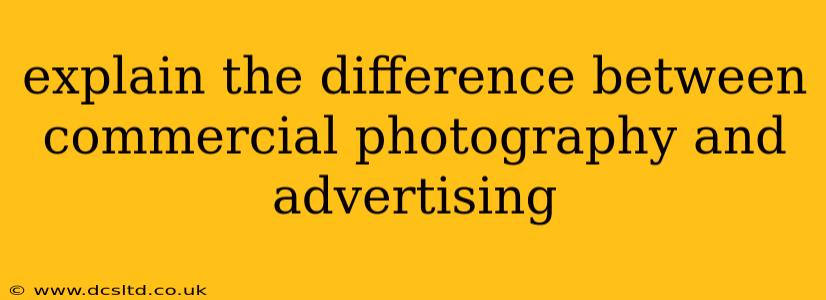Decoding the Differences: Commercial Photography vs. Advertising Photography
While the terms "commercial photography" and "advertising photography" are often used interchangeably, there's a subtle yet significant distinction between the two. Both involve creating visually appealing images for professional purposes, but their goals and target audiences differ. Understanding this difference is crucial for both photographers and clients seeking specific photographic services.
Commercial Photography: This broad category encompasses any photography produced for business purposes. Its primary goal is to enhance a company's image, showcase products or services, and ultimately drive sales. This can be achieved through various approaches, including:
- Product Photography: Showcasing individual products in a visually appealing way to highlight their features and benefits. Think of those stunning images of watches, jewelry, or high-end electronics you see online.
- Corporate Photography: Images used to portray a company's culture, values, and employees. This includes headshots of staff, photos of company events, and images capturing the work environment.
- Industrial Photography: Capturing images of machinery, manufacturing processes, or industrial facilities. Often used for marketing, investor relations, or internal communication.
- Food Photography: Delicious-looking photos of food and drinks for menus, websites, and cookbooks.
- Architectural Photography: Showcasing the beauty and functionality of buildings and spaces, often for real estate listings or architectural portfolios.
Advertising Photography: This is a subset of commercial photography. Its primary purpose is explicitly to persuade the viewer to take a specific action, such as buying a product or service. Advertising photography is specifically designed to be part of a larger advertising campaign, appearing in print, digital, or broadcast media. It's often characterized by:
- Strong Visual Storytelling: Advertising photography aims to communicate a clear message and evoke a specific emotion in the viewer, encouraging them to engage with the brand.
- Targeted Messaging: The images are carefully crafted to appeal to the target demographic of the advertising campaign.
- Call to Action (often implied): While not always explicit, advertising photography aims to drive the viewer toward a specific action, such as visiting a website, making a purchase, or contacting the company.
Here's a table summarizing the key differences:
| Feature | Commercial Photography | Advertising Photography |
|---|---|---|
| Primary Goal | Enhance brand image, showcase products/services | Persuade viewer to take specific action |
| Scope | Broader range of applications | Focused on advertising campaigns |
| Target Audience | General public or specific business segments | Clearly defined target demographic |
| Messaging | Can be implicit or explicit | Explicit, often with a strong call to action |
| Purpose | Build brand awareness, improve sales indirectly | Directly drive sales, generate leads |
Frequently Asked Questions (FAQs):
1. Can a single image be both commercial and advertising photography?
Yes! An image used on a website to sell a product could be considered both commercial (because it promotes the product) and advertising (if it's part of a broader marketing campaign with a clear call to action). The context is key.
2. What type of photography is better for my business?
The best type depends on your specific goals. If you need high-quality images for your website or brochures to present your products or services, commercial photography is sufficient. If you're running a specific ad campaign aiming to drive immediate sales, advertising photography is the better choice.
3. Do I need a specialized photographer for each type?
Not necessarily. Many photographers are skilled in both commercial and advertising photography. However, it's helpful to find a photographer with experience in the style and approach most relevant to your needs.
In conclusion, while overlapping significantly, commercial and advertising photography serve distinct purposes. Understanding this nuance will help you choose the right approach for your business goals and achieve maximum impact through powerful visual communication.
